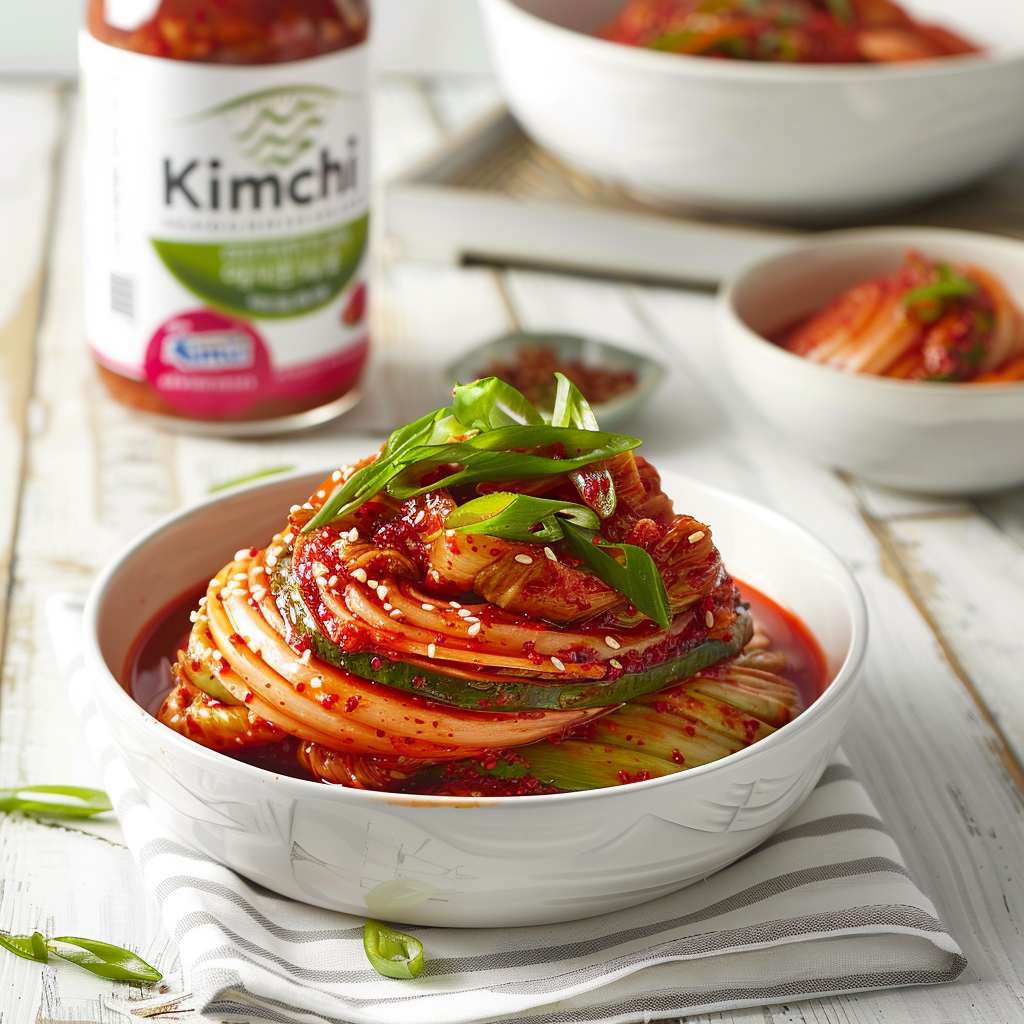Hey, Welcome to my little corner of the internet where I share my love for cooking and all things delicious.Today I will share Kimchi Recipe through Beyond the Bayou Blog. Growing up, my grandma used to make the most amazing kimchi in her tiny kitchen along with Kimchi Fried Rice and Tteokbokki.
The aroma would fill the entire house. As she worked her magic, I would watch, wide-eyed, marveling at the way she transformed simple ingredients into something truly extraordinary.
Fast forward to today, and I find myself craving that same taste of home. So, armed with her handwritten recipe and a few tweaks of my own, I set out to recreate her masterpiece.
And you know what? It’s not just about the dish, it’s about the memories it brings back, the warmth of family gatherings, and the joy of sharing a meal together.
So, whether you’re a seasoned chef or a kitchen newbie, I invite you to join me on this culinary journey. Let’s roll up our sleeves, get our hands dirty, and create some delicious memories together. Ready to dive in? Let’s get cooking.
What is Kimchi?
Kimchi is a traditional Korean dish renowned for its pungent flavor and health benefits. Essentially, it’s a fermented vegetable dish, typically made from cabbage and radishes, although there are many regional and seasonal variations.
The vegetables are seasoned with a mix of spices, including chili powder, garlic, ginger, and salt. After preparation, the mixture is left to ferment, allowing beneficial bacteria to proliferate.
This fermentation process not only enhances the flavor but also results in the development of probiotics, which are beneficial for gut health. This is a staple in Korean cuisine, often served as a side dish or incorporated into various recipes, such as stews, pancakes, and fried rice.
Beyond its culinary significance, It holds cultural importance, symbolizing Korea’s rich heritage and culinary tradition. Its complex flavors and nutritional profile have made it increasingly popular worldwide.
Kimchi Recipe
Equipment
- Large mixing bowl
- Knife and Cutting Board
- Blender or Food Processor
- Measuring Spoons and Cups
- Clean, airtight storage containers
Ingredients
- 1 medium Napa cabbage
- 2 large Korean radishes
- 1 cup Korean coarse sea salt for salting the vegetables
- 5 cloves garlic
- 1 thumb-sized piece of ginger
- 1/4 cup Korean red chili powder
- 2 tablespoons fish sauce
- 1 tablespoon sugar optional, for added sweetness
- 2 carrots
- 4 scallions
- 1 small daikon radish
Instructions
- Prepare Vegetables: Wash and chop 1 medium Napa cabbage and 2 large Korean radishes into bite-sized pieces. Place them in a large mixing bowl.
- Salt Vegetables: Sprinkle 1 cup of Korean coarse sea salt over the chopped vegetables. Toss well to ensure even coating. Let them sit for a few hours to draw out excess moisture, occasionally tossing them.
- Make Seasoning Paste: In a blender or food processor, combine 5 cloves of garlic, 1 thumb-sized piece of ginger (peeled), 1/4 cup of Korean red chili powder, 2 tablespoons of fish sauce, and 1 tablespoon of sugar (optional). Blend until smooth.
- Prepare Additional Ingredients: Shred 2 carrots, thinly slice 4 scallions, and julienne 1 small daikon radish.
- Rinse and Drain Vegetables: After the vegetables have wilted, rinse them under cold water to remove excess salt. Drain well in a colander.
- Mix Vegetables and Seasoning: In the large mixing bowl, combine the rinsed and drained vegetables with the seasoning paste, shredded carrots, sliced scallions, and julienned daikon radish. Mix well until all the vegetables are evenly coated with the seasoning.
- Pack into Fermentation Container: Pack the seasoned vegetables tightly into a clean, airtight fermentation container, pressing down firmly to remove air bubbles.
- Ferment: Close the container and let it ferment at room temperature for a few days to several weeks, depending on your preferred level of fermentation. Remember to burp the container periodically to release pressure.
Notes
Nutrition
Time for the Tips!
- Be Mindful of Salting: Ensure the vegetables are evenly salted during the salting process to draw out excess moisture effectively.
- Fermentation Time: Taste your kimchi periodically during fermentation to gauge its flavor and decide when it’s reached your desired level of tanginess.
- Gloves: Consider wearing gloves when handling spicy ingredients like chili powder to avoid irritation, especially if you have sensitive skin.
- Fermentation Container: Use a clean, airtight container for fermentation to prevent contamination and ensure a successful fermentation process.
- Press Down Vegetables: Pack the seasoned vegetables tightly into the fermentation container and press down firmly to eliminate air pockets, which can lead to spoilage.
- Experiment with Additional Ingredients: Feel free to customize your dish by adding other vegetables or ingredients like fruits, seafood, or even kimchi brine from a previous batch for extra flavor complexity.
- Storage: Store it in airtight containers in the refrigerator once it’s fermented to your liking. This slows down the fermentation process and preserves its flavor.

